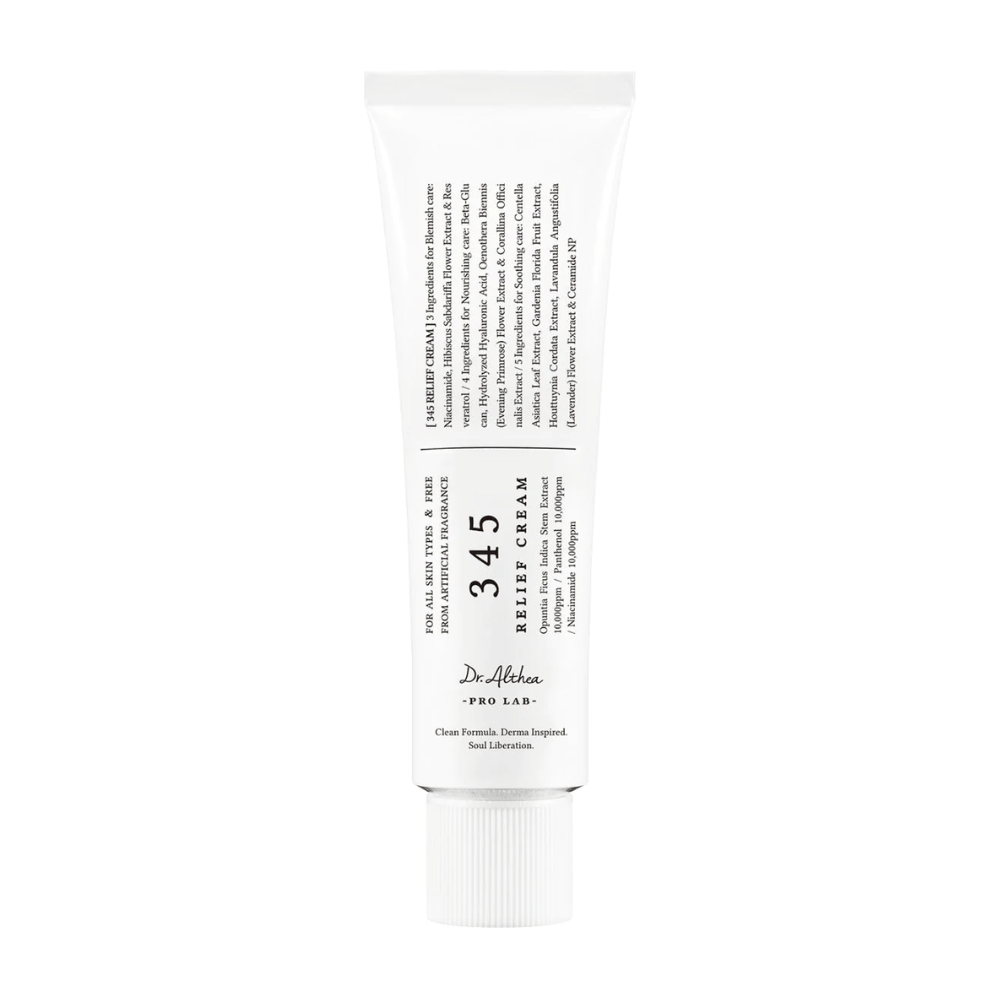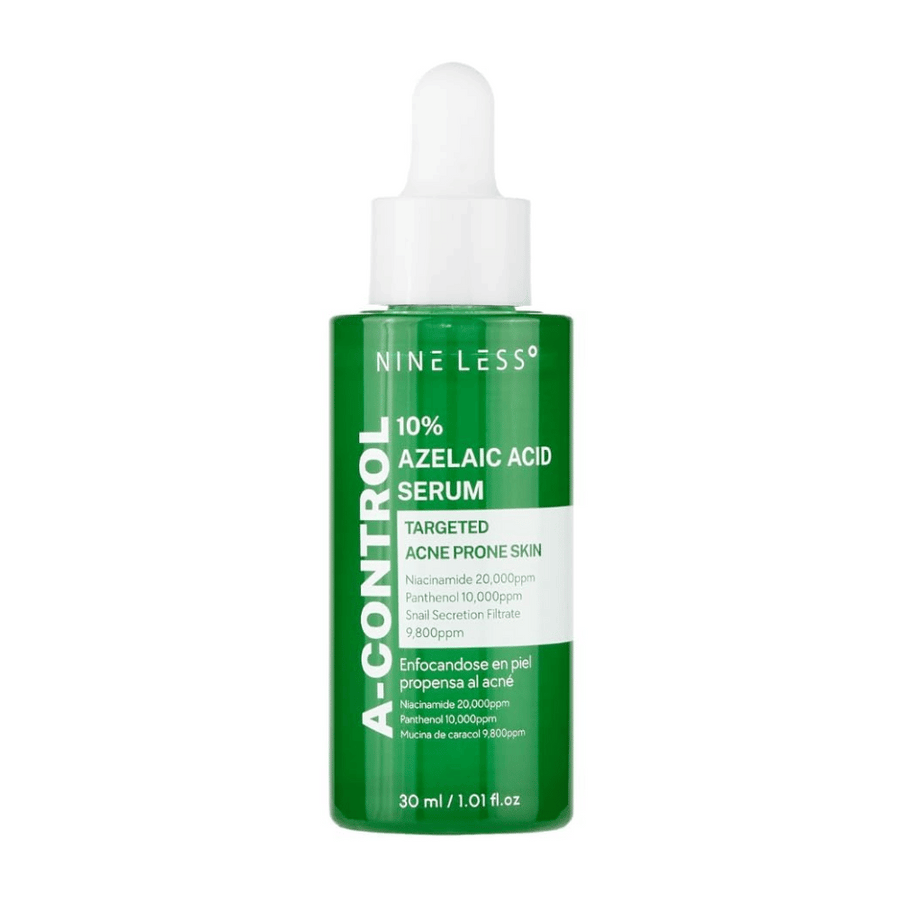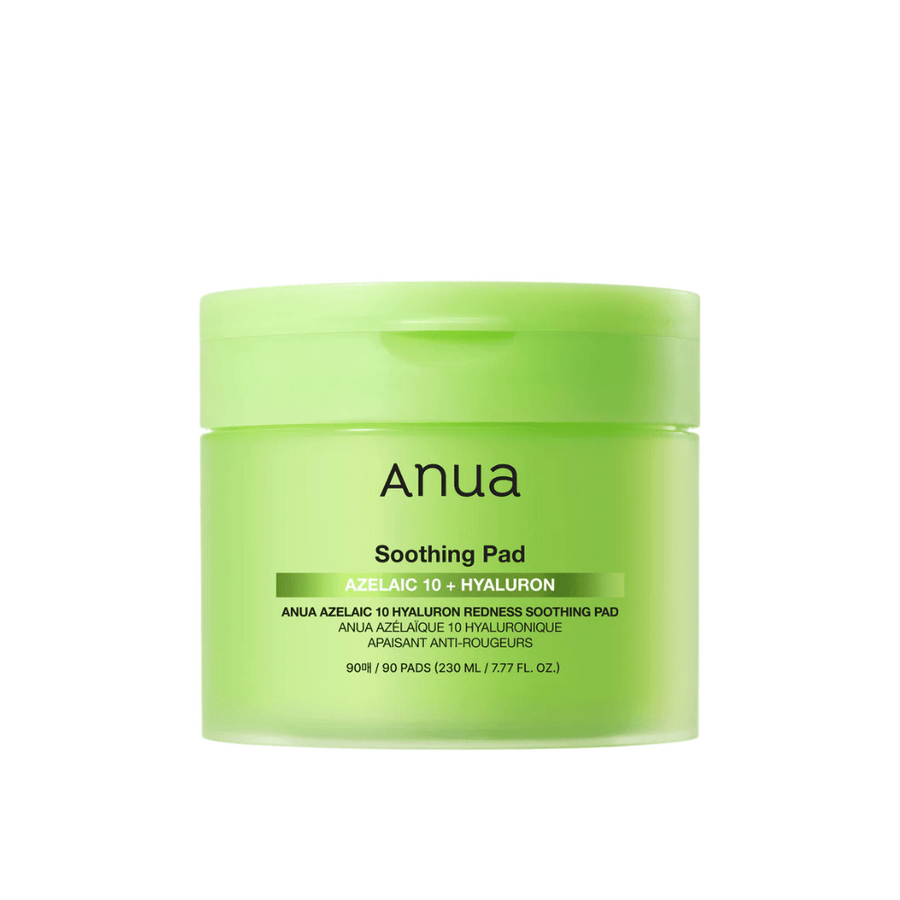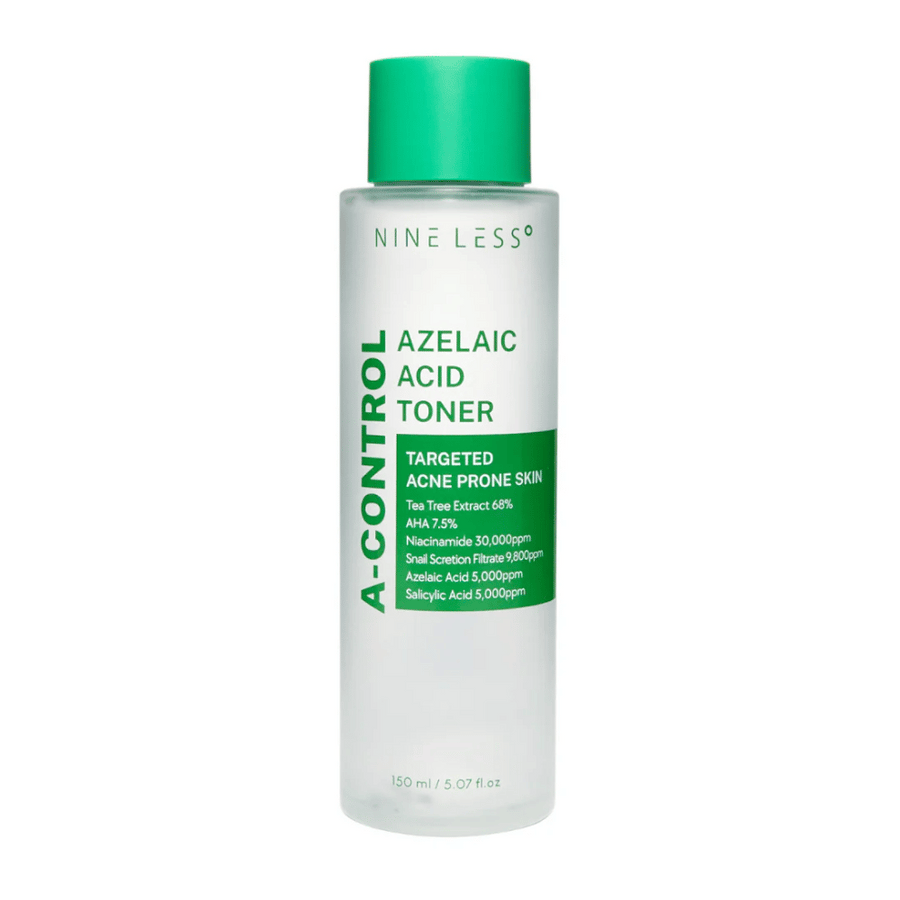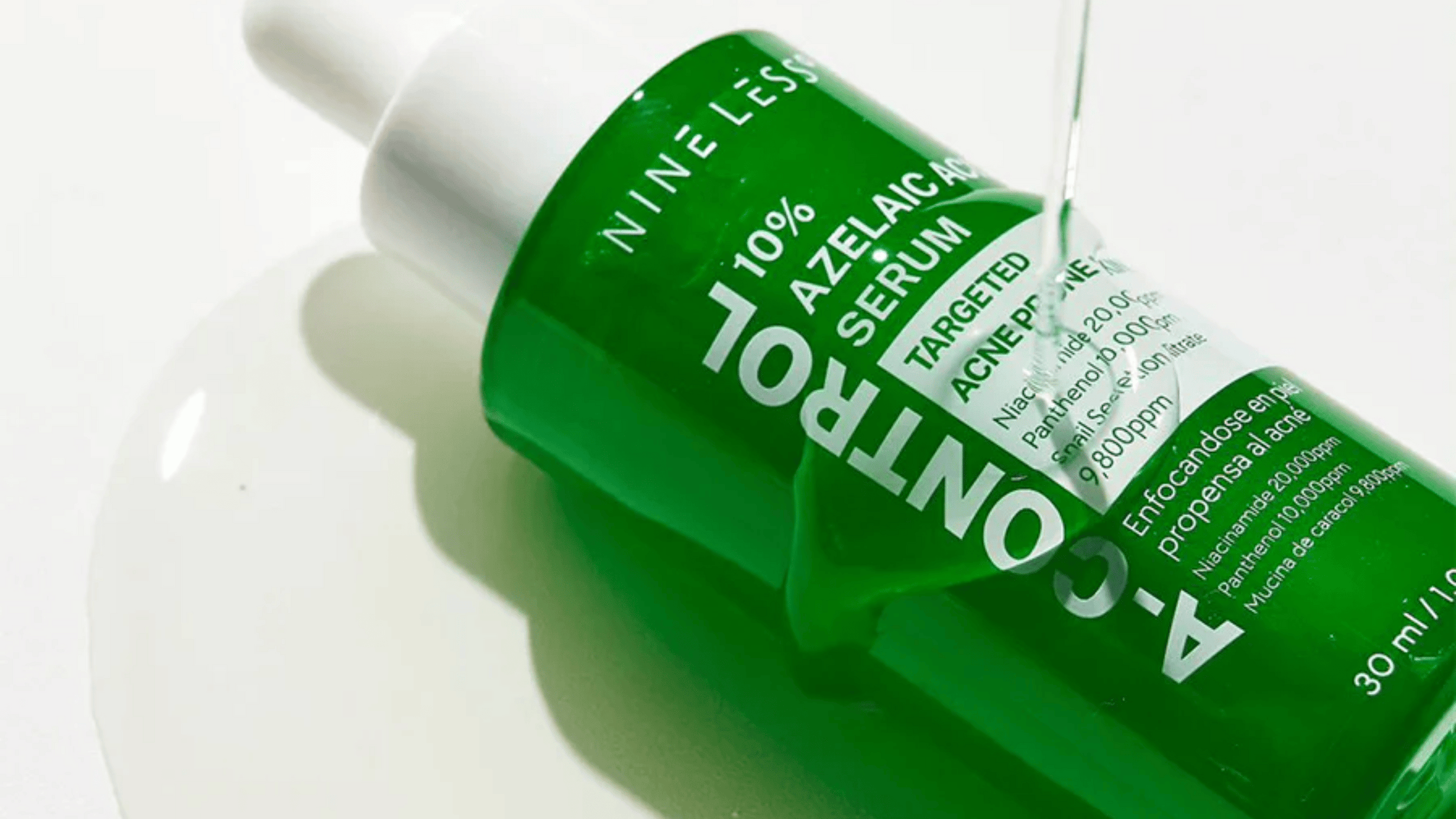
Are you looking for a solution for acne and rosacea that is gentle on the skin? Azelaic acid might be the answer. This mild yet effective acid combats bacteria and inflammation without causing irritation. Read on to discover everything about azelaic acid and how it can improve your skin.
Key Takeaways
- Azelaic acid is a mild exfoliating acid with antibacterial properties, making it effective against acne and rosacea.
- It helps to even out skin tone and improve skin texture by removing dead skin cells and slowing melanin production.
- Azelaic acid is suitable for sensitive skin and can be combined with other ingredients like hyaluronic acid to maximize benefits without causing irritation.
What is Azelaic Acid?
Azelaic acid is a mild exfoliating acid derived from grains and yeast. It is often used for treating acne and rosacea, making it a versatile ingredient in skincare. Unlike stronger active ingredients, azelaic acid is gentle on the skin, making it ideal for people with sensitive skin. Want to know more about how to treat acne? Read our guide here.
What makes azelaic acid particularly effective is its antibacterial properties, which prevent the spread of acne and rosacea bacteria. This means you can combat these common skin problems without worrying about irritation or hypersensitivity.
Azelaic acid also works as a leave-on exfoliant, meaning it cleans pores and improves skin texture over time. By removing dead skin cells and promoting cell renewal, azelaic acid can help create a clearer and more even skin tone. Discover more products that counteract uneven skin tone here.
Properties and Benefits of Azelaic Acid
One of the most impressive properties of azelaic acid is its antibacterial ability. By combating skin bacteria, it can effectively counteract acne and prevent new breakouts. This makes azelaic acid an excellent choice for those struggling with stubborn acne.
Azelaic acid is also very useful in treating rosacea. It helps reduce inflammation and redness, which can be a great relief for those suffering from this chronic skin condition. By calming the skin and even reducing visible symptoms, azelaic acid can improve the quality of life for many.
When it comes to evening out skin tone, azelaic acid is a real star. It can slow down melanin production, which helps to reduce hyperpigmentation and even out skin tone. This is especially good for those with dark spots or uneven skin tone. Looking for effective products against pigmentation? Check out our range of products that counteract pigmentation and find your new favorite!
Finally, azelaic acid has keratolytic properties, which means it helps to remove dead skin cells and improve skin texture. By promoting cell renewal, azelaic acid can provide a smoother and more radiant skin.
Use of Azelaic Acid in Korean Skincare
In Korean skincare, azelaic acid is a popular ingredient due to its versatility and effectiveness. It is used in various forms such as face creams, gels, and serums, making it easy to include in your daily skincare routine.
An interesting development within K-beauty is the use of potassium azeloyl diglycinate, a new form of azelaic acid that has a light and oil-free consistency. This makes the products particularly attractive for those with oily or combination skin, as they do not feel heavy or sticky on the skin. Explore our products for oily skin and combination skin to find the right solutions for your skin type.
Serums with azelaic acid are often applied after toner in Korean skincare routines to optimally address specific skin concerns. This step helps to maximize the absorption and effectiveness of azelaic acid, resulting in a smoother and clearer skin tone. Explore our range of serum to find the right product for your skincare routine.
Is azelaic acid suitable for sensitive skin?
For people with sensitive skin, it can be challenging to find products that do not irritate or cause redness. Fortunately, azelaic acid is suitable for those with dry and sensitive skin due to its mild yet effective action.
Azelaic acid has soothing properties that can alleviate skin sensitivity and redness. To maximize its benefits, it is important to cleanse the skin before application, which helps to increase absorption.
It is always recommended to test on a small area first to avoid hypersensitivity. After azelaic acid has been absorbed, you can apply a moisturizing cream to retain the skin's moisture and further reduce the risk of irritation.
Combining azelaic acid with other active ingredients
To get the most out of your skincare routine, it can be beneficial to combine azelaic acid with other active ingredients. Hyaluronic acid is an excellent example, as it can counteract any dryness from retinol while improving skin texture and increasing moisture. Hyaluronic acid can also mitigate irritation caused by retinol, making these two ingredients effective to use together. This means you can enjoy the benefits of both retinol and azelaic acid without worrying about excessive irritation. Explore our range of products with hyaluronic acid to complement your routine and maximize results.
When combining different acids and active ingredients, it is important to consider your skin type and sensitivity. Using azelaic acid 2-3 times a week is a good guideline, but it can vary depending on how sensitive your skin is.
Finally, it is important to match products with similar base formulations to ensure they work effectively together. This can help to maximize benefits and minimize the risk of irritation or adverse reactions.
Expected results with regular use
With regular use of azelaic acid, you can expect a range of positive results. Firstly, azelaic acid is effective in counteracting dark spots and evening out skin tone, making it useful in the treatment of melasma.
This acid also helps to smooth the skin's surface, promoting a more uniform and clearer skin tone. By improving skin texture, azelaic acid can contribute to a more radiant and healthy complexion.
Finally, with regular use, azelaic acid can improve the overall health and appearance of the skin. This makes it a valuable addition to your skincare routine, regardless of skin type or specific needs.
Summary
Azelaic acid has proven to be a versatile and effective ingredient for improving skin health. By combating acne, reducing redness and hyperpigmentation, and improving skin texture, azelaic acid offers a range of benefits for various skin types.
By including azelaic acid in your daily skincare routine, you can achieve clearer, smoother, and more radiant skin. Whether you struggle with acne, rosacea, or hyperpigmentation, azelaic acid can be the key to healthier skin.
Frequently Asked Questions
Is azelaic acid suitable for sensitive skin?
Azelaic acid is suitable for sensitive skin due to its soothing properties, but it is important to first test on a small area to avoid hypersensitivity.
How do I combine azelaic acid with other active ingredients?
Azelaic acid can be effectively combined with hyaluronic acid to reduce dryness and irritation. Make sure to use products with similar base formulations for optimal effect.
What results can I expect from azelaic acid?
Azelaic acid can be expected to counteract dark spots, even out skin tone, and improve skin texture with regular use.
How do I use azelaic acid in my skincare routine?
Azelaic acid should be applied after toner in your skincare routine to maximize its absorption and effectiveness. It is available in various forms such as face creams, gels, and serums.
Is azelaic acid good for treating rosacea?
Azelaic acid is effective for treating rosacea as it reduces inflammation and redness. It is often recommended by dermatologists to improve skin condition.



